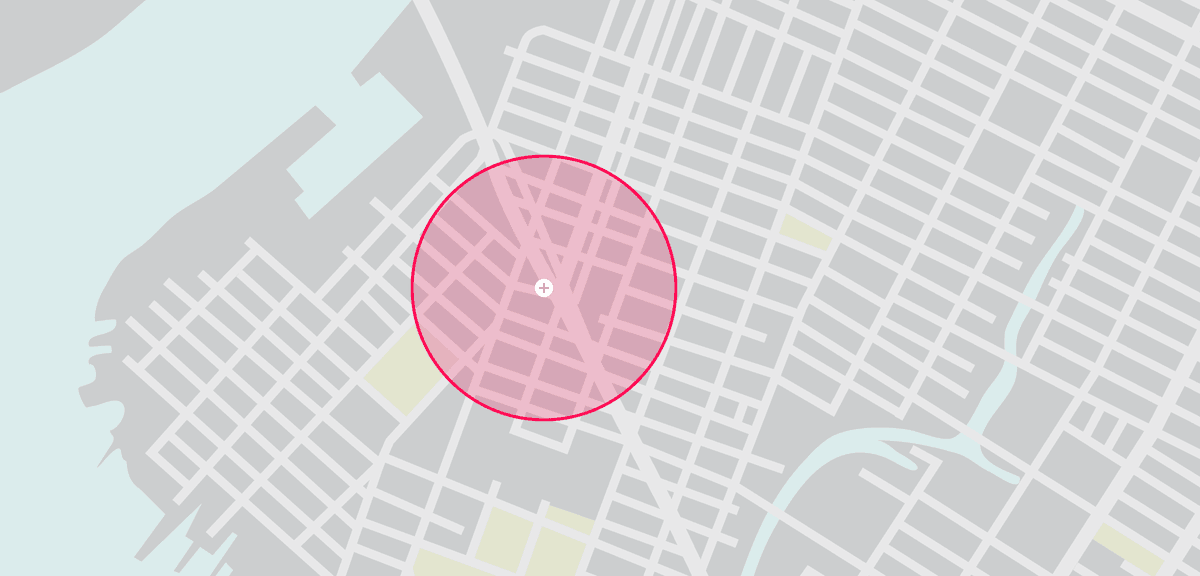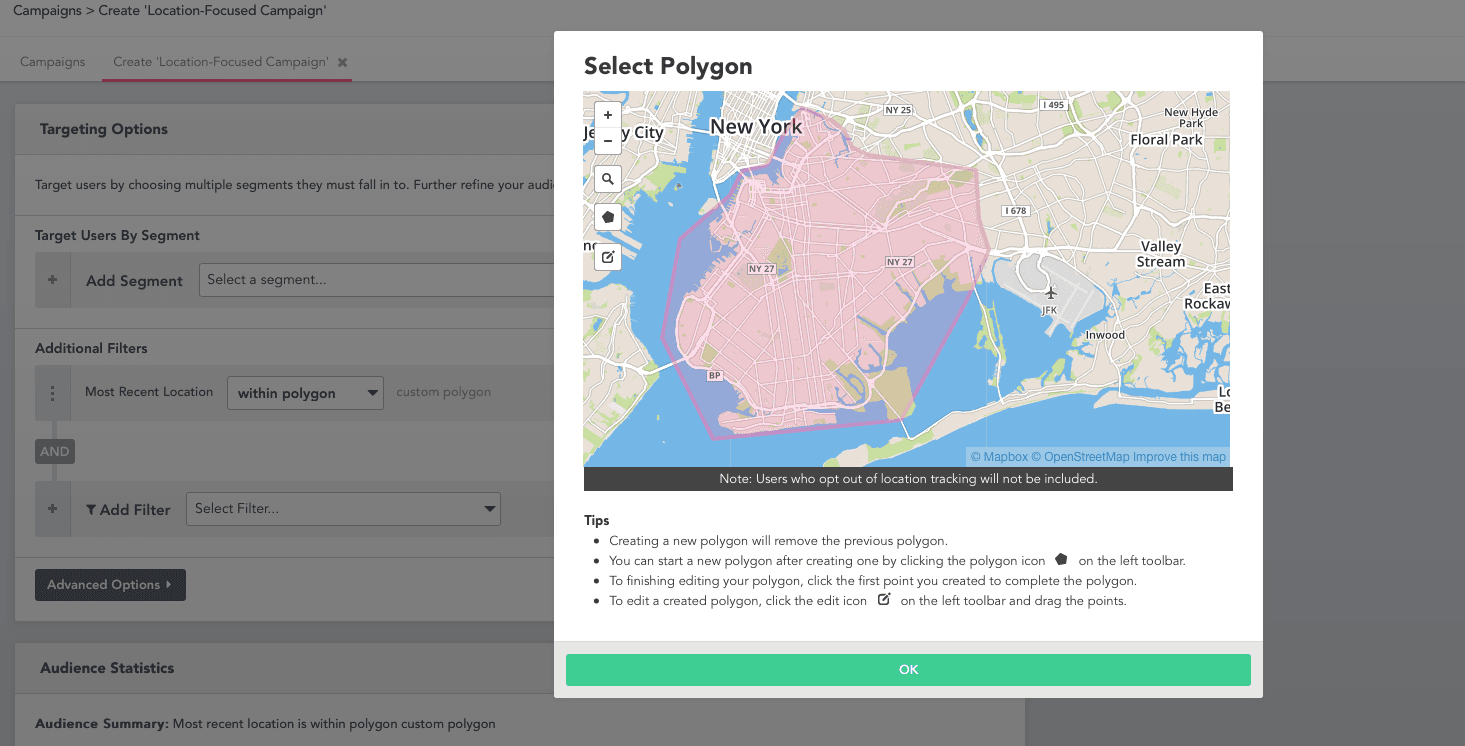Location-Based Marketing: How It Works and Why It Matters
Published on August 15, 2017/Last edited on August 15, 2017/7 min read


Todd Grennan
Content Production Principal, Content Marketing at BrazeBefore the introduction of the first iPhone back in 2007, knowing your customers’ location meant having their mailing address at your fingertips—but the location-tracking capabilities built into today’s smartphones and other mobile devices has made it possible for brands to understand each customer’s location in powerful, nuanced ways.
But while technology has advanced, many brands’ customer engagement strategies haven’t kept up. 83% of consumers now expect personalized experiences from brands, and companies that don’t take advantage of the location data at their disposal are missing out on one of their best opportunities to provide their audience with the sorts of relevant and valuable experiences that support real, long-term customer loyalty.
What is location-based marketing?

The Braze location targeting tool, part of the Location Marketing Suite
At its core, location-based marketing means taking data related to each customer’s location and real-world movements and using that information to make their experience of your brand more relevant, more responsive, and more valuable to them as individual. What does that look like?
- Personalizing the promotional email you send so that customers receive a message highlighting discounts at the store closest to them
- Nudging users to stop and get coffee on the way to work by sending them a push notification that’s triggered when they leave their house
- Targeting a web push notification that highlights your brand’s new athleisure line exclusively to people who visited a gym in the last week
- And a lot more…
While location-based marketing can be used to engage customers across platforms (from mobile to the web to connected TVs and other emerging technologies) and messaging channels (like push, email, web push, in-app messages, and more), this approach to customer engagement is built around mobile’s powerful location data collection capabilities.
How do brands get customer location data, anyway?
In general, before your brand can take action on audience location or movement data, your customers have to take steps to make that information available to you. Those steps differ somewhat based on whether a customer has an iPhone or an Android device, but either way it’s smart for brands to explain during the onboarding process how sharing location information will benefit users, in order to maximize the amount of location information at their disposal.
The main customer actions needed to support location-based marketing?
1. Location services/reporting are turned on
Smartphones are the biggest driver of location data for brands—but whether a given customer has an Android or iPhone, your company won’t be able to gather valuable location data if their device doesn’t have its location-tracking capabilities enabled. While both iOS and Android track location by default, users have the ability to turn this feature on or off at will, preventing any and all apps from accessing location information.
2. Location permissions have been granted for your brand’s app
Just because a given user has location tracking enabled on their device doesn’t necessarily mean that they’re open to sharing that information with your brand. On Android devices, users are generally prompted to enable access to location data (and push notifications, and other permissions) as part of a bulk permissioning request made when they download an app, requiring them to take action to opt out if they’re not interested in sharing that information with your app. iPhones and iPads, however, require users to grant permission before sharing location information, making it important for brands to make a case for the benefits of enabling location tracking before asking users to opt in.
3. Bluetooth is turned on
While a lot of location data can be gathered through a smartphone’s built-in sensors, when it comes to fine-grained location data (that is, understanding what aisle of a store a customer is in, rather than what neighborhood or city), some brands turn to beacons. But because these devices use bluetooth to communicate with mobile devices, only customers who have turned on bluetooth on their phones will receive beacon-triggered messages, potentially limiting the impact of these tools.
How Braze can support your location-based marketing efforts
The Braze Location Marketing Suite makes it easy to take the customer data at your disposal and use to reach your audience effectively with highly targeted, contextually relevant outreach as they move through their day. Whether you’re looking to adjust the content of your customer messaging by region, trigger notifications when users enter or leave significant locations, or more effectively target your cross-channel messaging based on each users’ actual interests and behavior, the Location Marketing Suite is built to make it possible.
The full suite includes:
1. Location targeting
Want to send one version of a message to people in Brooklyn and a different version to people in Queens? The Braze platform’s location targeting (also known as geo-targeting) capabilities make it easy. The tool allows marketers to draw custom shapes on our location targeting map, letting you precisely fit your target region to the specific intended audience for each campaign.
2. Geofences
Looking to reach customers with a push notification for your ridesharing service when they land at an airport or exit a football stadium? The Braze platform’s Geofences support makes it easy to reach your customers with trigger messages when they enter or leave preselected locations. This tool allows brands to deliver highly relevant messages in response to user movement, providing more responsive, valuable outreach.
3. Location data enrichment
Want to ensure that your brand’s promotional outreach connected to your upcoming music festival reaches a receptive audience? The Braze partnership with location data firm PlaceIQ makes it possible for brands to gain a more nuanced understand of the context and implications of their customers’ locations and real-world movements by combining traditional location data with aggregated behavioral and movement data. That data enrichment makes it possible to use dynamic audience segments to—for instance—target customers based on whether they’ve visited a nightclub or concert venue in the last month, rather than just what city they live in, supporting more accurate and effective audience segmentation.
4. Location data detection
Interested in sending a happy hour offer to users near one of your brand’s restaurants when they leave work—even if they’ve never shared their work address with your app? The Braze partnership with location intelligence firm Foursquare makes it possible by allowing brands to take advantage of location insights sourced from Foursquare’s global crowdsourced data set to more effectively reach customers. That ability to implicitly understand the context surrounding customers’ movements can power highly personalized, location-focused trigger messaging, supporting more relevant, valuable brand experiences.
5. Beacon support
Needs ways to target messages to customer based on their location within an enclosed space like a sports stadium, airport, or brick and mortar store? The Braze integration with location solutions brand Gimbal allows brands to use Gimbal’s proprietary mobile beacons to trigger outreach when customers pass as far as 50 meters away or a close as a few centimeters. This tool also supports nuanced, location-based data collection that can help support future message personalization based on customer movements within a given location—for instance, allowing you to track when a customer has lingered in front of a certain display or in a particular section.
Final thoughts
When it comes to location, mobile changed the game. It’s not enough anymore for brands to know how customers engage online—you need to know how mobile and web activity corresponds to customers’ real-world movement, habits, and behavior. Location-based marketing makes that possible, but only if you have the tools and tactics you need to carry out your strategy effectively.
Done right, location-based marketing can drive major ROI. What does that look like? By leveraging the Location Marketing Suite’s support for location targeting and location data enrichment, Urban Outfitters was able to increase conversions by 75% and boost average revenue per recipient by 146% for promotional outreach centered around users’ location and real-world activity. That’s powerful.
Interested in learning more about location-based marketing and how to make it work for you? Check out these additional resources:
Be Absolutely Engaging.™
Sign up for regular updates from Braze.


